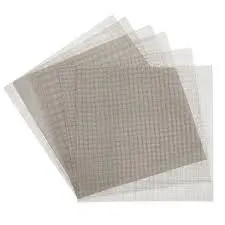-
+86 15030157877
-
sales@galvanizedmetalmesh.com
Dic . 16, 2024 18:22 Back to list
Galvanized Wire Exporters for Farm Fencing Solutions and Agricultural Applications
The Growing Market for Galvanized Farm Fencing Wire A Comprehensive Overview
In recent years, the demand for galvanized farm fencing wire has experienced a significant upsurge, driven by factors such as agricultural expansion, rural development, and a rising need for effective livestock management. As an essential component in the farming industry, galvanized fencing wire provides durability and resistance to corrosion, making it a preferred choice for farmers and agricultural businesses worldwide.
Understanding Galvanized Farm Fencing Wire
Galvanized wire is made by coating steel with a layer of zinc to prevent rust and corrosion. This process enhances the lifespan of the wire, making it ideal for outdoor applications, especially in agricultural settings where environmental factors can lead to rapid wear and tear. Galvanized farm fencing wire is commonly used to create enclosures for livestock, protect crops from wildlife, and delineate property lines.
Advantages of Galvanized Fencing Wire
One of the most significant advantages of galvanized farm fencing wire is its longevity. Traditional fencing materials, such as untreated wood or non-galvanized wire, can deteriorate quickly due to exposure to moisture, pests, and UV radiation. On the other hand, galvanized wire can last for decades, providing farmers with a cost-effective solution to their fencing needs.
Additionally, galvanized wire is relatively low maintenance; it does not require frequent painting or treatment, allowing farmers to allocate resources to other critical areas of their operations. The strength and flexibility of galvanized wire also mean it can withstand the physical stresses of livestock movement and extreme weather conditions, making it an invaluable asset on any farm.
Export Opportunities in the Industry
The global market for galvanized farm fencing wire is experiencing robust growth, led by several key regions, including North America, Europe, and parts of Asia-Pacific. With the rising global population and the accompanying demand for food production, there is an expanded need for efficient agricultural practices, enhancing the prospects for fencing materials.
For exporters, it's essential to understand the diverse needs of different markets. For example, North American farmers may prioritize durability and resistance to harsh climates, while European markets may focus more on aesthetic value and compliance with environmental regulations. Understanding these nuances can help exporters tailor their products effectively.
farm fencing wire galvanized exporter

Trends Driving Demand
Several trends are currently influencing the demand for galvanized fencing wire. One of the foremost trends is the increasing emphasis on sustainable farming practices. As more farmers seek to implement eco-friendly solutions, they are turning to galvanized wire that not only fulfills their fencing requirements but also aligns with their sustainability goals due to its longevity and reduced need for replacement.
Moreover, the rise of organic farming practices has led to a greater need for secure fencing to protect crops from wildlife. Farmers looking to set up organic farms require reliable fencing solutions that will ensure their products remain untouched by animals. This trend is paving the way for an influx of orders for galvanized fencing wire across various agricultural sectors.
Challenges in the Export Market
Despite the optimistic outlook, exporters of galvanized farm fencing wire face several challenges. Fluctuations in raw material prices can lead to unpredictable costs, making it difficult to maintain competitive pricing. Moreover, trade regulations and tariffs can impact shipping costs and complicate the export process.
Another challenge is the need for high-quality standards. Different countries may have varying regulations regarding the thickness, tensile strength, and zinc coating weight of the wire. Exporters must ensure that their products meet these requirements to avoid costly penalties and product returns.
Conclusion
The market for galvanized farm fencing wire presents ample opportunities for growth and innovation. As agriculture continues to evolve, the demand for reliable, durable, and sustainable fencing solutions will only increase. For exporters, understanding market trends, regional needs, and overcoming challenges will be crucial in leveraging the potential of this thriving industry.
In summary, galvanized farm fencing wire not only plays a vital role in agricultural efficiency and productivity but also offers a pathway for exporters to engage in a lucrative market driven by innovation and sustainability. By prioritizing quality and adapting to market demands, exporters can secure their position in this essential sector of the agricultural landscape.
-
Smart AI Fence Solutions with GPT-4 Turbo | Secure & Fast
NewsAug.02,2025
-
Welded Gabion Solutions: Durable & AI-Enhanced Designs
NewsAug.01,2025
-
Premium Welded Gabion Mesh | Robust & Eco-Friendly
NewsJul.31,2025
-
Premium Eco-Friendly Roof Tiles | Affordable & Durable
NewsJul.31,2025
-
Premium Roof Tiles for Durable & Stylish Roofing Solutions
NewsJul.30,2025
-
High-Quality Roof Tiles for Durable & Stylish Roofing Solutions
NewsJul.29,2025



